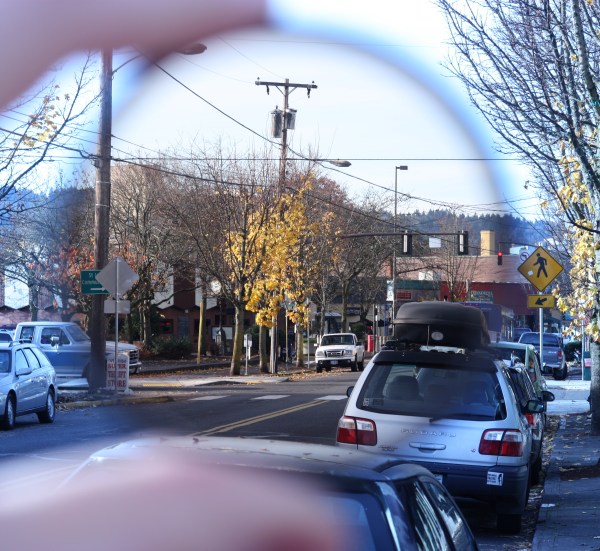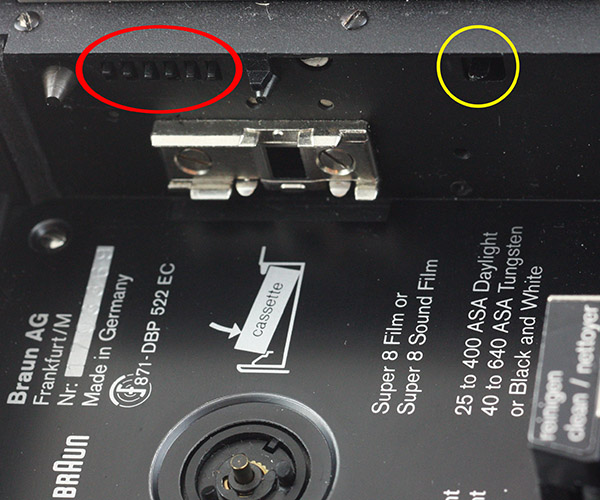Super 8 & the “T” – Beginner’s Guide to Tungsten Film, Built‑in 85 Filters & Cartridge NotchesUpdated 6 months ago
If you have ever wondered why some Super 8 film stocks end with the letter “T”, or what that tiny orange filter icon on your camera does, you have come to the right place. This guide demystifies tungsten‑balanced film, colour temperature, and the clever cartridge‑notch system that makes the Super 8 format so beginner‑friendly.

1. What Is Colour Temperature?
Different light sources emit light at different colour temperatures, measured in Kelvin (K). While our eyes adapt automatically, film sees these differences very clearly.
| Light source | Approx. temperature | Appearance |
|---|---|---|
| Bright daylight | 5,500 K | Blue‑white |
| Overcast sky | 6,500 K+ | Cool blue |
| Tungsten bulb | 3,200 K | Orange‑yellow |
| Fluorescent lamp | Varies | Often green |
| Candlelight | 1,900 K | Deep orange |
2. Why the “T” Appears on Super 8 Film Boxes
The “T” stands for tungsten‑balanced film. Stocks such as Kodak Vision3 500T are designed to look neutral under warm, 3,200 K tungsten light. Shoot them outdoors in daylight and everything shifts noticeably blue unless corrected.
3. Kodak’s Clever Fix: the Internal 85 Filter
When Super 8 debuted in 1965, most holiday footage was shot outdoors with tungsten stock. Kodak solved the colour‑shift problem by fitting a tiny Wratten 85 orange filter inside almost every Super 8 camera. Engage the filter for daylight, disengage it for indoor tungsten light—simple and fool‑proof.

4. Cartridge Notches: How Your Camera Swings the Filter
Flip your cartridge over and you may see a small rectangular filter notch. This simple bit of plastic tells the camera whether to leave the internal 85 filter in place or park it out of the light path.
| Cartridge type | Notch present? | Internal 85 filter action | Result |
|---|---|---|---|
| Tungsten‑balanced (200T, 500T, 800T) | Yes | Filter stays in | Tungsten film records daylight correctly |
| Daylight‑balanced (50D, 100D) | No | Filter swings out | Daylight film records colours naturally |
5. The Hidden Cost: Exposure Penalty
The internal 85 filter absorbs roughly ⅔ stop of light. For instance, 500T metered at 500 ASA behaves more like 320 ASA when the filter is engaged. Most modern cameras compensate automatically, but older models may not—so be ready to open up or rate the film slower.
6. A Typical Outdoor Scenario
- Load Vision3 500T in bright daylight.
- The cartridge notch engages the 85 filter.
- Colour balance is neutral, exposure is ⅔ stop slower.
- Forget to disengage the filter indoors and shots under tungsten bulbs turn orange.
7. Manual Filter Switch & When Built‑In Filters Fail
Ageing plastic
Many original 85 filters were acrylic; time, heat and dust can yellow or craze them, softening sharpness.
Modern options exist
Daylight stocks like 50D mean you no longer need to rely on tungsten film plus an internal filter outside. For ultimate clarity, tape the filter switch to “out” and use a fresh glass 85 screw‑in filter only when required.
8. Quick Reference Tables
| Lighting situation | Film & filter | Exposure tip |
|---|---|---|
| Bright daylight | 50D or 500T + 85 IN | Meter at box speed |
| Overcast / golden hour | 50D or 500T + 85 IN | Open ½–1 stop |
| Indoor tungsten lamps | 500T, 85 OUT | Meter at box speed |
| Mixed night street / neon | 500T, 85 OUT | Accept slight casts, fine‑tune in grade |
9. Tips for Stress‑Free First Rolls
- Start with daylight film outdoors. No notch means no filter—zero settings to forget.
- Label your filter switch. A small “IN/OUT” sticker prevents mistakes when light changes fast.
- Watch the ISO loss. Tungsten + 85 outdoors? Rate 500T at 320 ASA or open ⅔ stop.
- Inspect the filter glass. Torch through the lens port; haze or scratches invite an external replacement.
- Relax—scans are forgiving. Labs can rebalance modest blue or orange shifts in post.
10. Creative Approaches to Colour Temperature
Rules are there to be bent. Shoot tungsten film in daylight without correction for an icy, futuristic blue. Use daylight film under tungsten bulbs for romantic amber scenes. Your colour choices become a storytelling tool.
11. Putting It All Together
Think of the internal 85 as orange sunglasses that automatically pop down whenever a tungsten cartridge drops into the camera. The cartridge notch is the handshake that says “I’m tungsten—leave the sunnies on”. Remove the notch (or flip the switch) and the sunnies come off. Master this notch → filter → colour relationship and you have solved 90 % of beginner Super 8 headaches.
Ready to shoot your first reel? Explore our motion services here or drop by the lab for advice.